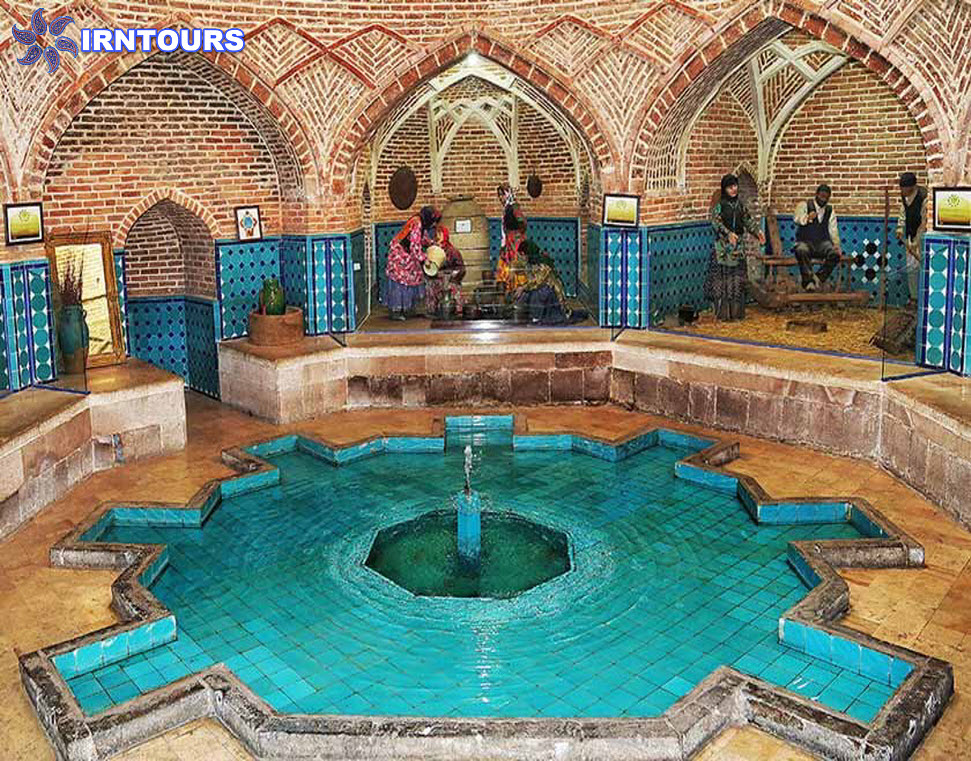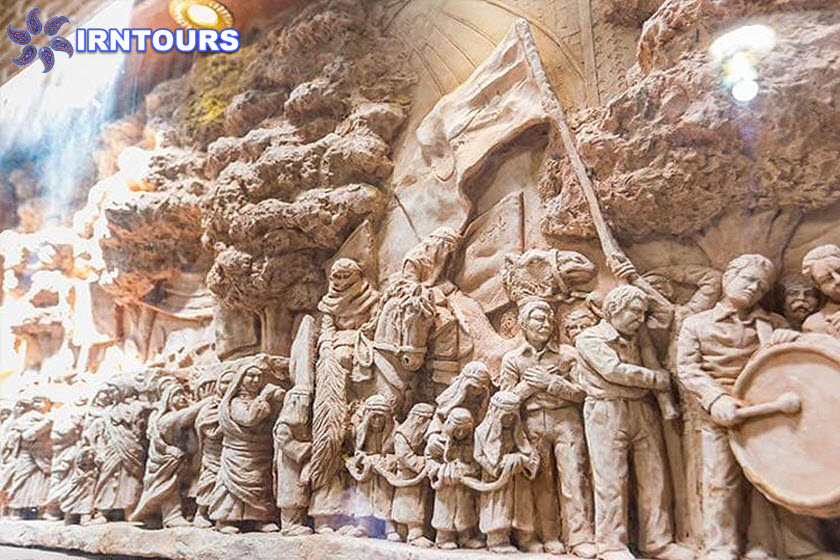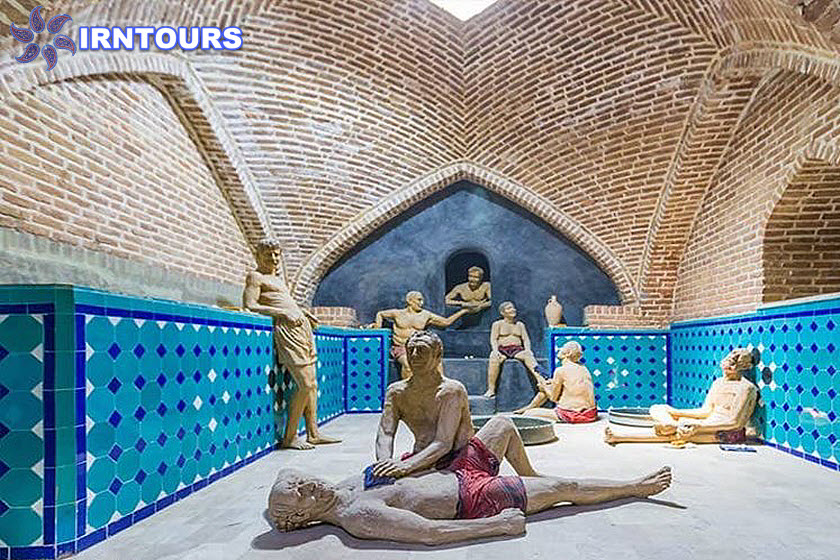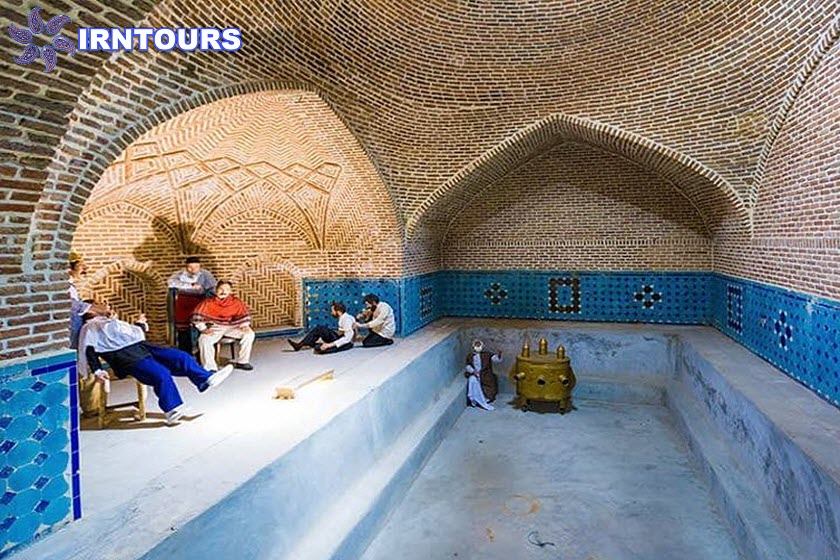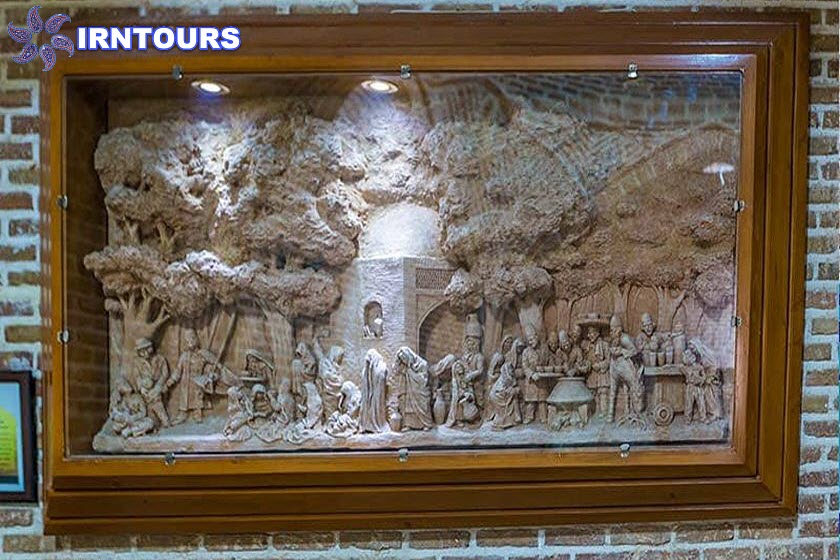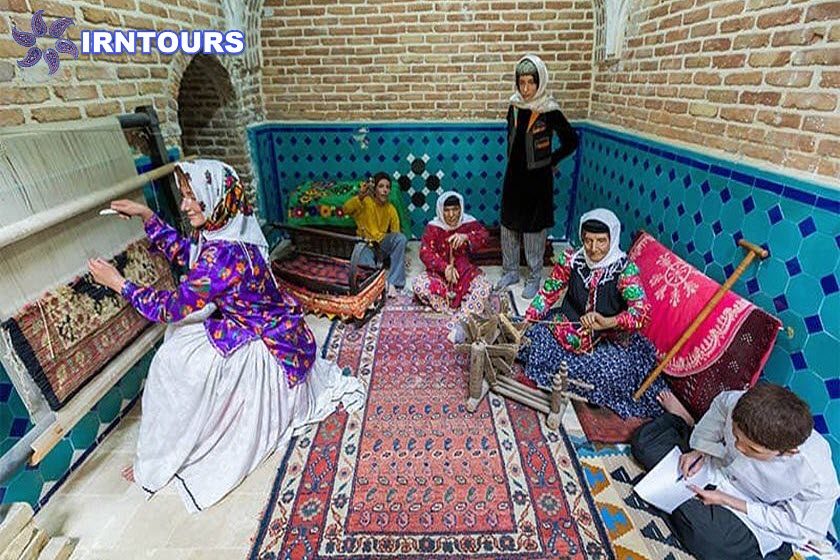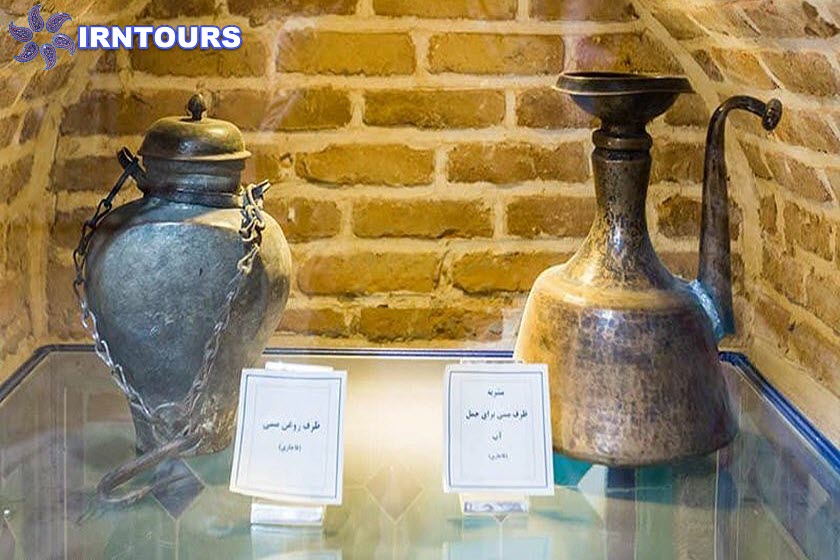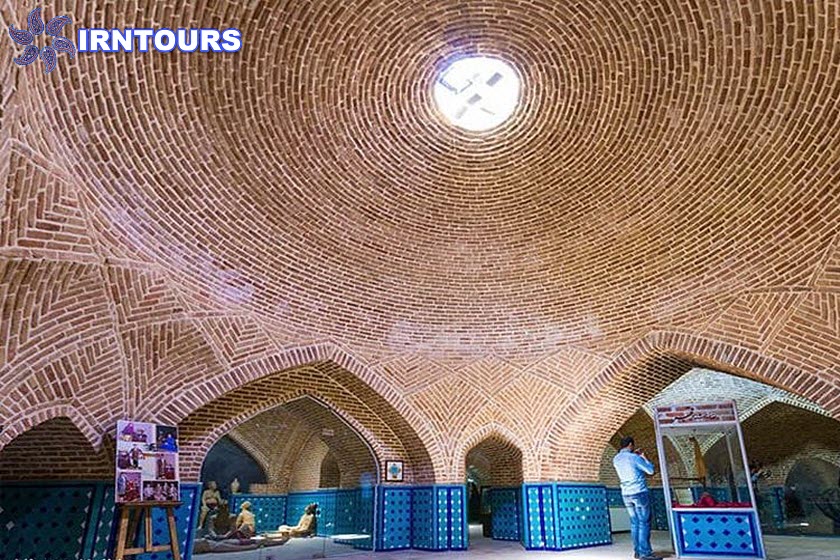About Qajar Bathhouse
Qajar bath is one of the biggest historical baths in Iran and one of the sightseeing places of Qazvin, which was built in the Safavid period. This bath, which was registered in the list of national works of Iran on August 2, 2005, is currently operating as the Qazvin Anthropology Museum. In this way, in addition to watching the architecture and decorations of historical buildings, you can get to know the culture and customs of Qazvin people.
Qajar Qazvin bath is located near Sabzeh Meydan (sq ), and because of this, many taxis pass through this square. Also, some bus lines also stop near the square. When you reach Sabzeh Maidan, you should go north on Naderi Boulevard. After that, enter Obeid Zakani Street and continue until you reach Dargahi Street. There is also access to the bathroom through Zarabadi Street.
This bath was used a lot in its time and most of the people of the city used it for bathing. Gradually, this bath fell out of prosperity and was forgotten for a long time. Finally, the Cultural Heritage and Tourism Organization of Qazvin province bought it and restored it.
- Qajar Qazvin bathhouse is located on Obeid Zakani St., Mohammad Reza Dargahi Alley.
- Address: Qazvin Province, Qazvin City, Naderi Blvd., Obeid Zakani St., Mohammad Reza Dargahi Alley
History of Qajar Bathhouse
The Qajar bath was built by the order of Shah Abbas II Safavid by Amir Gohan Khan, one of his generals and commanders, and at first it was called the Shahi bath. During the Qajar period, because the architect of the building was from the Qajar dynasty, the name of the bath was changed to “Qajar bath”.
The date of construction of this bath is “Saht Aafit” equivalent to 1678. In a historical period, in order to preserve the construction date, the architects wrote it as a code or in poetry, and including the Abjad number, the construction date remains in the heart of the poem. This method allowed the poem to remain in the mind and if the inscription of the building was lost, the date of its construction would be preserved.
In 2000, this historical building was purchased by the cultural heritage and tourism of Qazvin province and was restored with the investment of Qazvin municipality and the management of the renovation and improvement organization. Now this collection is working as an anthropology museum.
Different parts of Qajar bath
The area of the Qejar bath is about 1,045 square meters and includes two separate parts for women and men; In this way, men and women could use the bathroom at the same time. Like all Iranian baths, Qajr bath in Qazvin consists of three main parts: Sarbineh, Miandar and Garmkhaneh. The architectural principles of these baths are designed based on traditional medicine; In such a way that from the head to the greenhouse, the temperature and humidity increase gradually.
The main door of the bathroom opens to the south and leads to Serbineh with a spiral staircase. Another door leads to the bathroom from the west side, which was probably for women.
- Sarbineh: The big Sarbineh of Garambah, which has a beautiful pond in the middle of it, has a cold and dry atmosphere, and in Iranian architecture, this space is usually built in an octagonal shape. Qajar bathhouse in Qazvin also has an octagonal plan and consists of two gabled arches in the eastern and western parts. Around the pond, there are platforms that used to be a dressing room and now part of the objects of the Anthropology Museum are placed there. Sarbineh was used as a place to change clothes and prepare for bathing, and it led to the hothouse through a corridor with a very narrow stern arch. In the past, in addition to the dressing room, Serbineh was a public space for trading and chatting.
- Mid-door: The mid-door is the space that separates the greenhouse and the greenhouse. This spatial separation is done through corridors and long vestibules so that people do not suddenly enter the cold air from the hot air when leaving the bathroom.
- Hothouse : The hothouse for women and men is in the shape of a cross, and there are rooms for washing in the east and west of it. Qajr Qazvin bath has a large hot house including a hot water tank, a cold water pool, a manor house and a water reservoir. Water transfer in Qejar bath was done through clay pipes or so-called “clay covers”. The plinth of the greenhouse is tiled up to a height of 1.5 meters, and the formalization and Yazdi construction of the ceilings add to the beauty of this part of the bathroom. Large and one-piece stones have been used for the platforms, which are the characteristics of this building.
Qajar bathroom decorations
Tiling is an inseparable part of Iranian architecture, and along with formal arches, it is one of the main decorations of the Qajar bath. Also, the floor of this bathroom is covered with marble. This bathroom has a large brick dome, in the central part of which, a space can be seen as a skylight. This lamp provides light to all parts of the bathroom. In the past, the baths were built lower than the street level, and to provide light and ventilation, vaults were installed in their roofs, which, in addition to their useful use, gave Iranian baths a beautiful appearance.
Qajar Bathhouse Museum of Anthropology
Hamam Qajar Museum of Anthropology has now been changed to the Museum of Anthropology and consists of three sections: the Hall of Ethnicities, Occupations and Rituals, which show the daily life of people through life-size sculptures. In the Sarbineh section, the life of the dominant ethnic groups living in Qazvin, such as Tat, Maraghi, Kurd, Ler and Turk, has been exhibited. In the middle hall, the rituals of Sizdah Be-dar, Panjah Be-dar and the mourning ceremony of Imam Hussein (AS) can be visited, and in the last part, 6 occupations of cupping, housekeeping, bar selling, blacksmithing, reciting prayers, writing prayers and halaji can be visited.
A lot of precision and elegance has been used to make the museum’s wax sculptures, and their clothes have been recorded in the history of traditional tribes. Even the occupations and rituals mentioned in this museum are all completely reliable and authentic. Many researches have been done for the formation of this museum. Therefore, no historical and cultural contradiction can be found in it.
A prominent image of the Panjah Be-dar ritual ceremony in Qazvin, reconstruction of the grape-picking ceremony, the 12 Muharram ceremony panel, the saddle of the first mayor of Qazvin (Mirza Hassan Shahidi), the Tat tribe, the Kurdish tribe, the Turkish tribe, the Maraghi tribe, the camel saddle related to the Qajar period, the tradition of Shirvareh , the tradition of baking homemade sweets in Qazvin, peddling with handwheels in the city passages, example of a coppersmithing and copper ware bleaching workshop, traditional Qazvini wedding dress, Islamic era rectangular harp, brass samovar belonging to Qazvin municipality, copper water container, copper oil container (related to the Qajar period) and… are among the items displayed in this museum.
One of the interesting points about Qazvin people’s culture is their multi-nationality. When Safavid Shah Tahmasab moved the capital of Iran from Tabriz to Qazvin in the 10th century AH, many immigrants went to Qazvin, and this issue can be clearly seen in the Qazvin Anthropology Museum.
Tips for visiting Qajar bathhouse :
- Qejar bath is located in a narrow one-way street; Therefore, you have to be careful to find it.
- Since many alleys are forbidden to enter, use Iranian software to reach Qajar bath.
- Visiting hours of the bathroom are 9 to 18.


